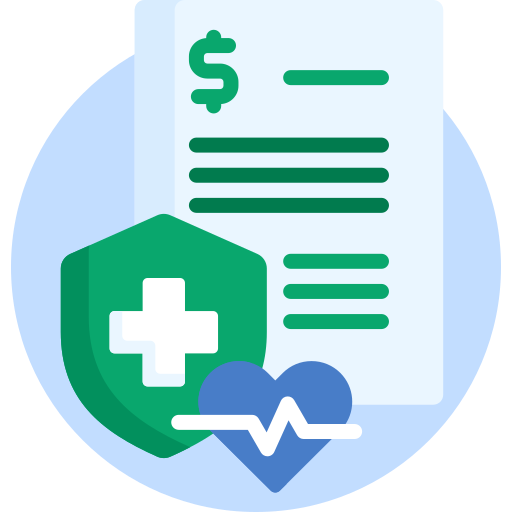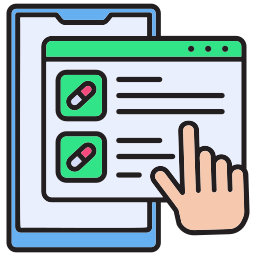













Centralize Health Metrics with One Wearable API Integration
- One integration – many devices and apps WearConnect Integrates Smoothly with 300+ Activity Trackers & Apps!
- Health & Fitness Data Intelligence Leverage structured data to analyze user metrics and provide actionable insights.
- Security and Compliance Ensuring strict adherence to industry regulations for a secure and compliant environment.
WearConnect Admin Tools
- Integrations: Streamline EMR and EHR Integration which includes Epic, Cerner, Athena Health, and other platforms.
- Patients: Patient management system for easy access to patient information, history, and engagement tools.
- Practitioner: Manage practitioners’ schedules, tasks, and communications to optimize healthcare delivery.
- Medications: Track patient medications and refills with seamless integration to e-prescribe services.
- Appointments: Efficient appointment scheduling and management system to optimize clinic workflow and patient scheduling.

Benefits of Wearable API Integration

Access to Wearable Device Features
Wearable APIs provide developers with access to the unique hardware features of wearable devices, such as accelerometers, gyroscopes, heart rate monitors, and other sensors. This enables the creation of applications that can utilize these features for innovative functionalities like activity tracking, health monitoring, and gesture recognition.

Better User Engagement
Wearable APIs allow for real-time interactions and notifications directly on the user's wrist or wearable device. This immediacy can lead to higher user engagement, as users can receive timely updates, alerts, and prompts without needing to check their phones. It enhances user convenience by providing quick access to critical information and actions.

Easy Integration with Other Devices
These APIs facilitate smooth communication between wearables and other devices like smartphones and tablets. Developers can create applications that synchronize data across devices, offer remote control features, or provide extended functionalities by leveraging the capabilities of multiple devices in tandem.

Improved Health and Fitness Applications
With access to health-related data through Wearable APIs, developers can build sophisticated health and fitness apps. These applications can monitor vital signs, track physical activities, and even detect anomalies, providing users with valuable insights into their well-being.
Why is Wearable API Integration a Must for You?
Delaying Wearable API Integration will cost you both in the long and short run. Allow your organization to be ready for the future of healthcare with these:
✅ Real-time health updates: Monitor patient vitals 24/7 and catch issues early.
✅ Personalized care: Use wearable data to customize treatments and improve outcomes.
✅ Engaged patients: Keep patients active in their care with easy access to their health data.
✅ Cost-effective: Reduce in-person visits and hospital stays, saving time and money.
✅ Regulatory compliance: Stay on top of healthcare regulations with secure, integrated data.
✅ Future-ready: Boost your healthcare system’s efficiency with easy wearable integration.
Customer Satisfaction Rate
Faster Time-to-Market Delivery
Messages Processed Daily Volume
Reduction in Development Hours
Integration Cost Savings
Our Wearable API Integration Approach
Unified Data Access Provide easy access to patient data stored across diverse EHR platforms through a unified interface.
Role-Based Control Implement role-based access control to restrict access to sensitive patient information and ensure data security.
HL7 Standard Ensure compliance with HL7 standards for efficient data exchange and interoperability between healthcare systems.
FHIR Hosted
Empower your data management by hosting your own FHIR server, ensuring effective data management.
HIPAA Compliance Commitment to robust data security and patient privacy in adherence to HIPAA standards.
Scalable Integration Deliver solutions that adjust to your company's changing data needs, volume and complexity.
Wearable API Use Cases

Wellness Programs - Insurance companies can incentivize policyholders to adopt wearable devices for tracking health metrics. They can offer rewards or discounts based on achieving certain fitness goals or maintaining healthy habits. Risk Assessment - Payers can use data from wearables to assess the health risks of their members more accurately. This information helps in designing targeted interventions and preventive measures to mitigate risks and reduce healthcare costs. Chronic Disease Management- Wearable data can assist payers in managing chronic conditions more effectively by monitoring patients’ vital signs, medication adherence, and lifestyle behaviors remotely. Early detection of issues allows for timely interventions, preventing complications and hospitalizations.

Remote Patient Monitoring (RPM) - Healthcare providers can remotely monitor patients’ health status using wearable devices. They can track vital signs, activity levels, and medication adherence in real time, allowing for early intervention in case of any abnormalities. Post-Operative Care - Wearables can be used to monitor patients’ recovery progress after surgeries or medical procedures. Providers can track healing indicators, detect complications early, and adjust treatment plans accordingly, optimizing recovery outcomes. Clinical Trials - Wearable data can be leveraged in clinical research to gather objective measurements of patients’ health and behavior. Researchers can use this data to assess treatment effectiveness, monitor adverse events, and gain insights into disease progression.

Fitness Tracking Patients can use wearables to track their physical activity, sleep patterns, and overall fitness levels. They can set personalized goals, monitor progress, and receive motivational feedback to stay active and healthy. Chronic Condition Management Individuals with chronic conditions, such as diabetes or hypertension, can use wearables to monitor their health parameters continuously. They can share this data with their healthcare providers for personalized treatment plans and remote monitoring. Health Awareness - Wearables empower patients to take control of their health by providing insights into their daily habits and behaviors. They can gain awareness of how their lifestyle choices impact their health and make informed decisions to improve their well-being.
Process of Wearable API Integration with HealthConnect CoPilot
Initial Consultation Conduct an in-depth consultation to understand the client’s specific needs, goals, and existing systems. Identify key stakeholders and establish communication channels.
Requirement Gathering Collect integration requirements, including data sources, functionalities, and security considerations. Collaborate with clients to prioritize features and set project milestones.
System Analysis & Design Assess client systems for integration points and compatibility. Design a customized solution based on requirements, defining data mapping and security protocols.
Development and Testing Develop the integration solution using industry-standard protocols such as FHIR. Rigorously test the solution in a controlled environment to ensure reliability, scalability, and security. Perform comprehensive testing, including functional and performance tests.
Deployment Deploy the integrated solution in collaboration with the client’s IT team, ensuring minimal disruption to existing workflows. Provide comprehensive documentation and training to key stakeholders on using the new system effectively.
Maintenance and Improvement Implement monitoring tools for performance, data integrity, and security, providing ongoing maintenance and support. Drive improvement by gathering feedback, identifying enhancements, and staying updated on industry trends.
Frequently Asked Questions
- How does WearConnect ensure data security?
WearConnect ensures data security with robust encryption protocols, access controls, SOC 2, HIPAA compliance, and end-to-end encryption
- Can WearConnect integrate with existing healthcare systems?
Yes, WearConnect is designed to seamlessly integrate with existing healthcare systems, ensuring that data from wearable devices can be accessed and utilized alongside other patient health data.
- What types of data can WearConnect use from wearable devices?
WearConnect can collect various types of health and fitness data from wearable devices, including activity levels, heart rate, sleep patterns, and more.
- Can WearConnect be customized to meet specific healthcare needs?
Yes, WearConnect offers customization options to tailor the integration and data collection process to the unique requirements of healthcare organizations and providers.
HealthConnect CoPilot enabled us to access real-time patient health data through integration with Apple HealthKit, enhancing care delivery while maintaining HIPAA compliance. This led to personalized care and improved outcomes for patients.

AI-enhanced Obstetrics Clinical Decision Support Platform
HealthConnect CoPilot's integration with Epic's Hyperspace has transformed our workflow. Automated post-delivery examinations and HL7 protocol use ensure accurate updates to Epic. Their expertise empowers informed decision-making in childbirth

Top Provider for Customized Healthcare Solutions
HealthConnect CoPilot's helped us to integrate with leading tracking devices such as Apple Watches and Fitbit. This integration enables effortless syncing of health data, providing users with real-time insights displayed directly on our flagship products: smart mirrors and digital calendars.

A Provider of Customizable Display Solutions


